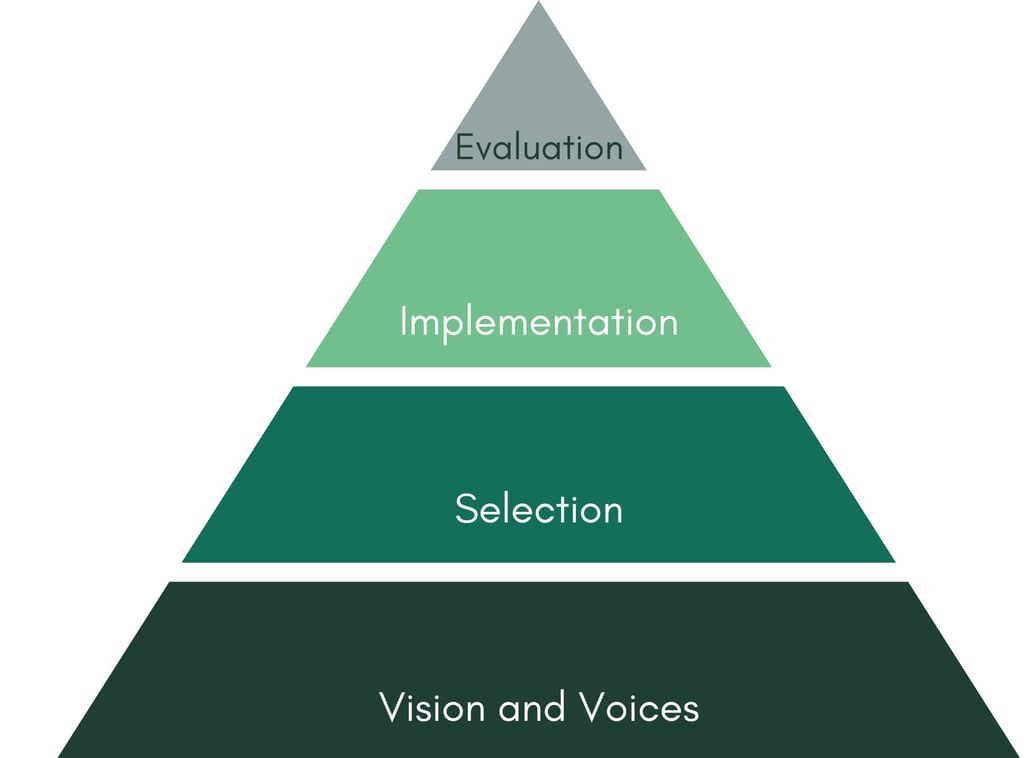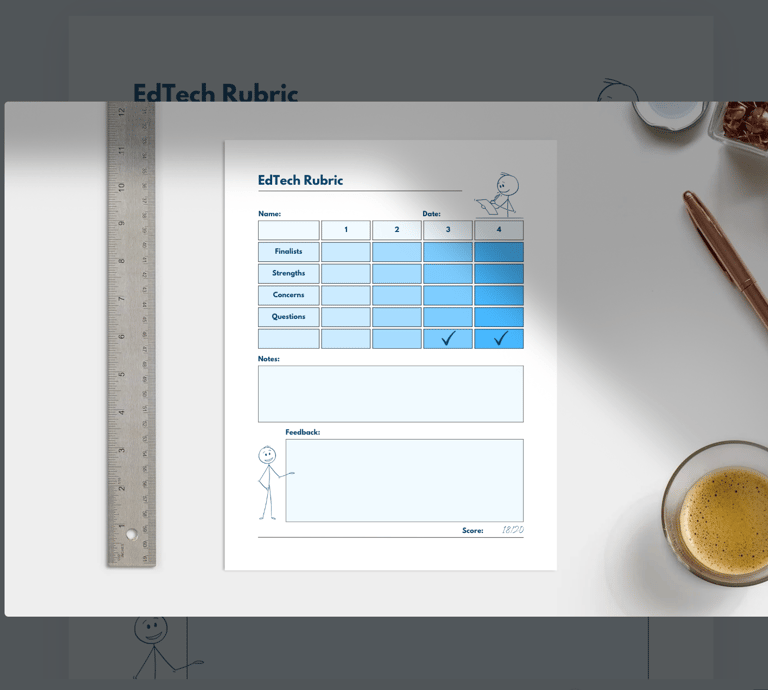Chapter 2: EdTech Selection
From Vision to Action: Conducting a Needs Analysis & Setting Selection Criteria
TEACHINGLEADERSHIP
Olia Tomski
2/27/20254 min read


With countless EdTech tools hitting the market, finding the right one can feel overwhelming. Whether you're selecting tools solo or working with a team, a strategic approach is key. This guide will help you:
✔ Define clear selection criteria based on your school’s needs and vision
✔ Filter out distractions to focus on the most relevant tools
✔ Build a shortlist of high-impact options for deeper evaluation
Cut through the noise and make smarter, more effective EdTech choices for your stakeholders.
So, you've built a strong foundation by aligning your EdTech decisions with your school’s vision and stakeholder voices. Now, it’s time to get specific about what you need. Before you start Googling the latest trending tools, take a step back.
What do you actually need EdTech to do?
This is where a needs analysis comes in. Think of it as a reality check—a way to bridge the gap between where you want to be (your goals) and what you have (your current tools, resources, and challenges).
Chapter 2.
EdTech Selection
Step 1: Conducting a Needs Analysis
When assessing whether an EdTech tool is achieving its intended goals, district leaders must consider multiple factors. These include technical aspects like compatibility with existing platforms (e.g., LMS) and district devices, functional effectiveness in aligning with student learning objectives and adapting to diverse skill levels, and equity considerations, such as accessibility features and support for multilingual learners. A well-rounded evaluation ensures that tools are not only effective but also inclusive and seamlessly integrated into the learning environment.
Start by cross-referencing the goals and outcomes you identified earlier with:
✅ Your current EdTech inventory (What tools are already in place?)
✅ Implementation success (Are tools actually being used as intended?)
✅ Stakeholder feedback (What do educators, students, and parents need?)
✅ Gaps and barriers (What’s missing? What’s not working?)


At its core, a needs analysis asks one key question:
“Do the tools we have help us reach our goals, or do we need something different?”
Example:
Some schools use platforms that provide independent practice, requiring students to complete a set number of hours per week. While this might help with time on task, if the work is disconnected from classroom instruction, students can lose interest and engagement. When these activities aren’t discussed in class or integrated into broader learning, the tool becomes a check-the-box exercise rather than a meaningful learning experience. This highlights the importance of ensuring that EdTech tools aren’t just used in isolation but are woven into classroom instruction in ways that reinforce learning goals.
Step 2: Engage Stakeholders for More Insight
Your educators, students, and parents can help identify gaps you might miss. Consider:
🎤 Surveys & Focus Groups – Get direct input on pain points and needs.
📊 Tech Usage Data – Analyze how current tools are (or aren’t) being used.
📣 Equity Check-In – Ensure all students, including ELLs and those with disabilities, are represented in decision-making.
Example:
A school aiming to differentiate instruction for multi-level classrooms might realize that their current LMS doesn’t offer adaptive learning features or real-time student progress tracking—highlighting a clear gap that a new tool must address..
Step 3: Set Your Selection Criteria
Now that you understand what’s working and what’s missing, it’s time to create your EdTech “must-have” list. This is your selection rubric—a set of non-negotiables that will help you filter tools efficiently and avoid wasting time on flashy-but-ineffective options.
Here are key criteria to consider:
1️⃣ Accessibility & Equity – Does it support all students, including English learners and students with disabilities?
2️⃣ Compatibility – Does it integrate with your existing tools (LMS, SIS, SSO)?
3️⃣ Cost & Sustainability – What’s the real price, including support, PD, and upgrades?
4️⃣ Alignment with Standards – Does it match curriculum and instructional goals?
5️⃣ Research & Efficacy – Is there evidence it works? Or is it just marketing?
6️⃣ Privacy & Security – Does it comply with FERPA, COPPA, and local policies?
7️⃣ Ease of Use & Training – Will teachers actually use it, or will it collect dust?
Example:
A district may find that teachers are using a math intervention tool, but ELL students struggle because it lacks language support. That’s a sign that linguistic accessibility should be a non-negotiable selection criterion for any new tools.

💡 Pro Tip:
Before adding any tool to your list, ask yourself:
"What’s the one thing we can do to align EdTech with our goals—such that everything else becomes easier and promotes student success?"
This focusing question (from The One Thing by Gary Keller) ensures you’re prioritizing high-impact tools that truly move the needle instead of getting lost in endless options.
Step 4: Build Your Shortlist
With your rubric in hand, start screening potential tools.
You can use trusted networks and professional EdTech organizations like:
🔹 Digital Promise – Certifies research-backed EdTech tools
🔹 Common Sense Education – Reviews tools for engagement & pedagogy
🔹 EdReports – Analyzes instructional materials for quality & alignment
🔹 Project Unicorn – Helps assess data interoperability
🔹 Student Data Privacy Consortium – Evaluates privacy compliance
Once you’ve narrowed the field, gather input from key stakeholders before making a final decision.


Example:
A middle school math department shortlists three digital math platforms that meet their criteria. They then survey teachers and run mini pilots in select classrooms to compare performance before making a final selection.

Key Takeaways
What’s Next?
✅ A needs analysis helps you identify gaps before searching for new tools.
✅ Engaging stakeholders ensures tools are practical and meet real needs.
✅ Selection criteria prevent distractions and keep decisions goal-driven.
✅ A clear rubric streamlines the process and helps evaluate options fairly.
With a shortlist of strong candidates, you’re now ready for the next step—piloting and evaluating tools in real-world conditions. Stay tuned for Chapter 3, where we’ll explore how to test, compare, and confidently select the right EdTech tools for your school.
Use this survey as a starting point!
Click the button to access a model survey. Download or make a copy to customize it to fit your school's needs
